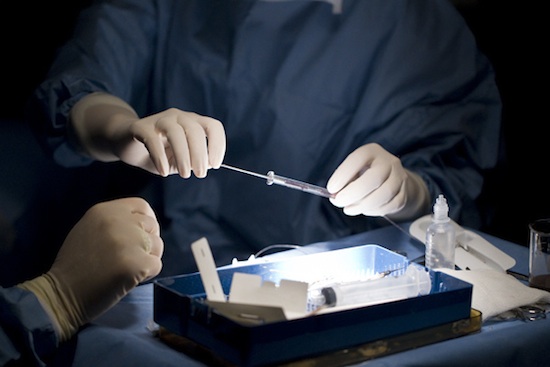Court Finds Government Allowed to Fund Embryonic Stem Cell Research
Ready for a story in which the part about stem cell research is the least complicated thing happening? The U.S. Circuit Court of Appeals for the District of Columbia today upheld a lower court’s decision to toss out a lawsuit that would have prevented the federal government from funding research on embryonic stem cells. The long and the short of that? Federal research dollars from the National Institutes of Health can fund research on embyronic stell cells.
Today’s decision puts the Obama administration on the side of the angels on this issue, legally speaking. Shortly after Obama’s inauguration, the administration overturned a longstanding restriction on federal funding for stem cell research put in place by George W. Bush in 2001. Lawsuits trying to restrict the funding once more — under a provision of the 1996 Dickey-Wicker amendment, which precludes taxpayer funding for research that harms an embryo — were filed in short order. Today, it appears those efforts have ended fruitlessly.
It’s the second time the three-judge panel has upheld the ruling on the grounds that harvesting stem cells does not harm a viable embryo, and should put the matter to rest permenanently — or at least until a new administration rolls into the White House. The judges in the case, it seems, are already tired of hearing the same arguments, with Judge David Sentelle stating that “…unless [the plaintiffs] have established some ‘extraordinary circumstance,’ the law of the case is established and we will not revisit the issue.” You can read the court’s decision here if you think it will make any sense to you.
This is great news for the field of stem cell research, which could provide cures to a variety of ailments too far-ranging to list here. It is also great news for people who believe that scientific and research funding should be a priority, and one not to be mucked about with by politicians. It is great news for people who like things that could cure cancer. We count ourselves in this last category, because cancer is a dick. It is less great news for people who are against embryonic stem cell research, but hey, not everyone can be a winner, right?
We’ve covered the ongoing study of induced pluripotent stem cells here before. IPS cells, which are derived from adult cells reverted back to an embryonic state by genetic tinkering, are great. Just terrific. Can’t say enough good things about them. They also come with their own set of risks and drawbacks, from being hard to produce to containing unwanted mutations.
Embryonic stem cells are easier to work with, as they haven’t been manipulated into behaving like something they really aren’t, like IPS cells. They also have more promise when it comes to treating maladies like blindness. While embryonic stem cells are harvested from fertilized egg cells created in vitro, those embryos are never destined for implantation — these are lumps of cellular tissue that are bound to become bio-waste, not babies. So yes, we could throw them out. Or we could use them for making medicine, curing illness, and saving lives instead. I mean, both are good options, really.
(via The Washington Posto)
- Adult stem cells are awesome
- Except when they’re not so awesome
- And we have a lot to learn about them, so we better get cracking
Have a tip we should know? tips@themarysue.com
